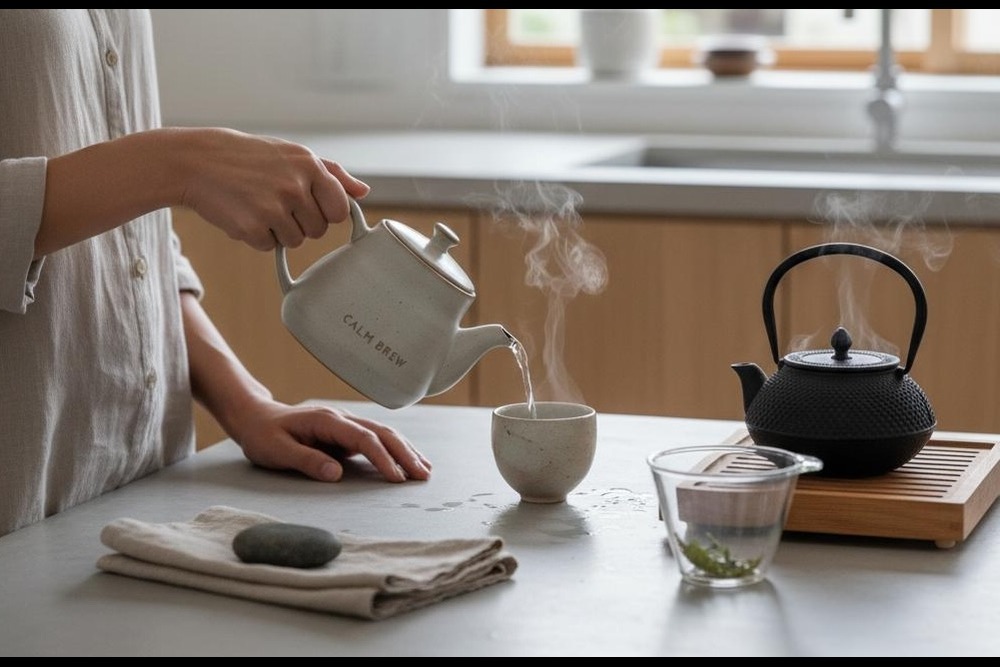Mindfulness Habits to Reduce Stress and Boost Happiness in 2026
Benjamin Lee
2025-10-11
6 min read

As we navigate the complexities of modern life in 2026, the ancient practice of mindfulness has become more relevant than ever. With technology continuing to accelerate the pace of daily life and create new sources of distraction, developing mindfulness habits offers a powerful antidote to stress while cultivating genuine happiness and well-being. The beauty of mindfulness lies not in its complexity, but in its simplicity and accessibility to anyone willing to pause and pay attention.
Understanding Mindfulness in the Modern Context
Mindfulness is fundamentally about being present in the current moment without judgment. Research from Harvard Medical School and other leading institutions has consistently shown that mindfulness practices can reduce stress hormones like cortisol while increasing activity in brain regions associated with positive emotions and emotional regulation. This isn't just feel-good theory—brain imaging studies demonstrate measurable changes in the structure and function of the brain after just eight weeks of regular mindfulness practice. The stress-reduction benefits of mindfulness work through several mechanisms. When we practice mindfulness, we activate the parasympathetic nervous system, often called the "rest and digest" response, which counteracts the chronic fight-or-flight state that characterizes modern stress. This physiological shift helps lower blood pressure, improve immune function, and reduce inflammation throughout the body.
Starting Your Day with Mindful Awareness
Beginning each day with intentional mindfulness sets a foundation for greater resilience and happiness throughout your waking hours. Rather than immediately reaching for your phone upon waking, try spending the first few minutes of your day simply noticing your breath and the sensations in your body. This practice doesn't require getting out of bed or any special equipment—just a willingness to be present with yourself before engaging with the external world. A simple morning breathing practice can transform your entire day. Spend three to five minutes focusing on slow, deep breaths, allowing your exhale to be slightly longer than your inhale. This activates the vagus nerve, which helps regulate your nervous system and promotes a sense of calm alertness. Notice how this brief practice affects your mood and energy levels compared to mornings when you immediately dive into emails or social media. Creating mindful transitions throughout your morning routine can also build momentum for the day ahead. Whether you're brushing your teeth, showering, or preparing breakfast, try to engage fully with these activities rather than mentally rehearsing your to-do list. This practice of single-tasking helps train your attention while making ordinary activities more enjoyable and less rushed.
Integrating Mindfulness into Work and Daily Activities
The workplace presents numerous opportunities to practice mindfulness, even during busy periods. Between meetings, take thirty seconds to focus on three deep breaths. This micro-practice helps reset your nervous system and approach the next task with greater clarity and composure. Studies from the University of Wisconsin and other research centers show that even brief mindfulness breaks can improve focus, creativity, and decision-making abilities. Mindful eating represents another powerful way to integrate awareness into daily life while enhancing both physical and emotional well-being. Instead of eating while distracted by screens or work, try dedicating at least one meal per day to mindful consumption. Notice the colors, textures, and flavors of your food. Eat slowly and pay attention to hunger and fullness cues. This practice not only improves digestion but also increases satisfaction and gratitude for nourishment. Walking meditation offers an excellent way to combine physical activity with mindfulness practice. Whether you're walking from your car to the office or taking a longer stroll during lunch, try shifting your attention to the sensations of walking. Feel your feet contacting the ground, notice the rhythm of your steps, and observe your surroundings without getting lost in mental commentary. This practice helps interrupt autopilot mode and brings fresh awareness to routine movements.

Using Technology Mindfully
Rather than viewing technology as the enemy of mindfulness, we can learn to use it more consciously in 2026. Consider implementing phone-free zones in your home, such as the bedroom or dining area. Create specific times for checking messages and social media rather than responding to every notification immediately. This intentional approach to technology use reduces stress while increasing your ability to be present with the people and activities that matter most. Mindfulness apps can serve as helpful training wheels for developing a consistent practice, but they shouldn't become another source of digital dependency. Use them as tools for learning techniques and maintaining accountability, but also cultivate the ability to practice without external guidance. The goal is to develop internal resources for mindfulness that aren't dependent on any particular device or application.
Cultivating Gratitude and Positive Emotions
Gratitude practices represent one of the most researched and effective ways to boost happiness while reducing stress. Studies from psychology researchers like Dr. Robert Emmons show that regular gratitude practice can increase life satisfaction by up to 25%. Rather than simply listing things you're grateful for, try deepening the practice by reflecting on why you're grateful and how these positive aspects of your life affect your well-being. Loving-kindness meditation offers another powerful tool for cultivating positive emotions while reducing stress. This practice involves silently offering good wishes to yourself and others, starting with loved ones and gradually extending to neutral people and even difficult individuals. Research indicates that loving-kindness practice increases positive emotions, social connectedness, and overall life satisfaction while reducing symptoms of depression and anxiety.
Managing Difficult Emotions Mindfully
Mindfulness doesn't eliminate difficult emotions, but it changes our relationship with them in profound ways. When stress, anger, or sadness arise, try approaching these feelings with curious attention rather than immediate resistance or judgment. Notice where you feel these emotions in your body, observe their intensity and quality, and remember that all emotional states are temporary. The RAIN technique—Recognize, Allow, Investigate, and Non-identification—provides a structured approach for working with challenging emotions mindfully. First, recognize what you're experiencing. Then allow the emotion to be present without trying to fix or change it. Investigate the emotion with kindness, noticing its physical sensations and thoughts. Finally, remember that you are not your emotions—they are temporary experiences passing through your awareness.
Building Long-term Mindfulness Habits
Consistency trumps intensity when developing mindfulness habits. A five-minute daily practice maintained over months will yield greater benefits than sporadic hour-long sessions. Choose practices that feel sustainable given your current life circumstances, and be willing to adjust your approach as needed. Consider joining a mindfulness community, whether in person or online, to support your ongoing practice. Sharing experiences with others who are committed to mindfulness can provide encouragement, accountability, and fresh perspectives on common challenges. The mindfulness habits you cultivate in 2026 can serve as a foundation for greater resilience, happiness, and well-being for years to come. By starting small, being consistent, and approaching the practice with patience and self-compassion, you're investing in your mental health and quality of life in ways that compound over time. Remember that mindfulness is not about achieving a particular state of mind, but about developing a new way of relating to whatever arises in your experience with greater awareness, acceptance, and wisdom.



